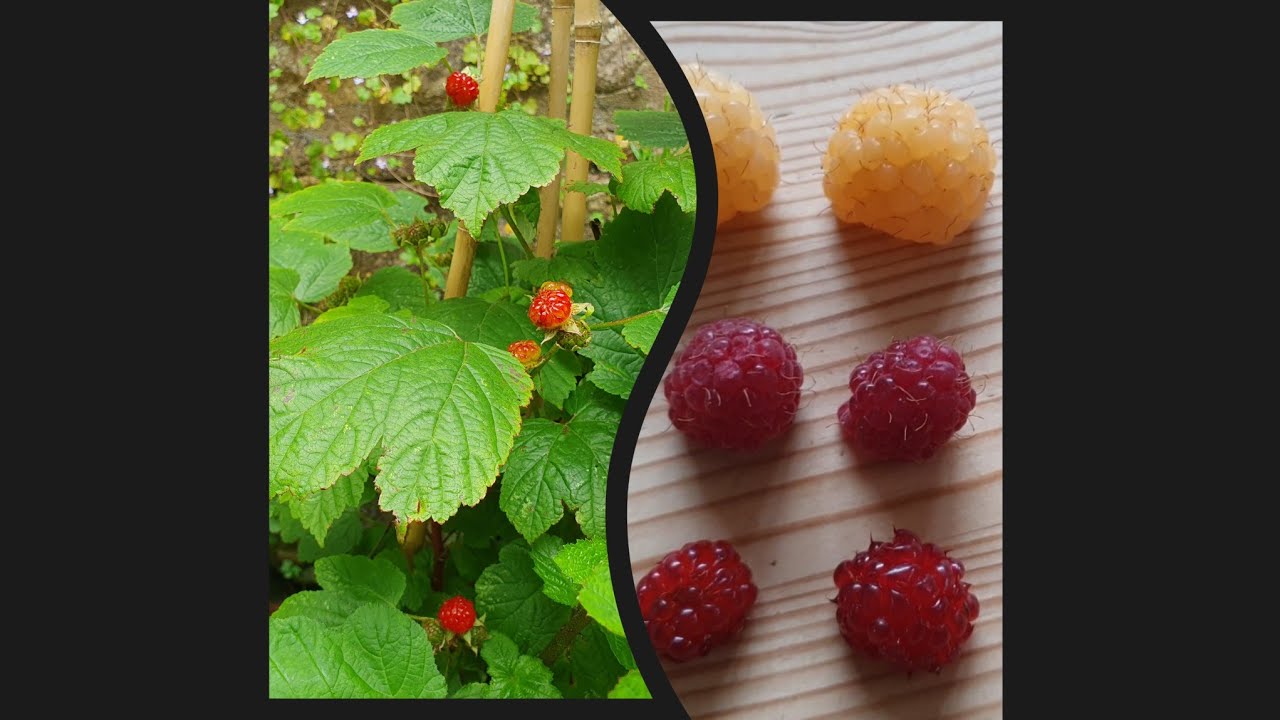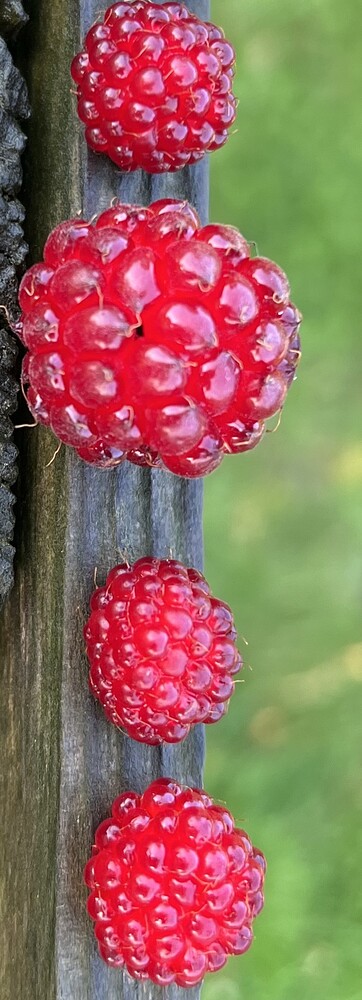Hi, Has anyone had experience growing the Hararasp a new “tree raspberry” bred by Toshikhiko Hara in Japan. I suspect it was bred from a Native Japanese raspberry possibly Rubus corchorifolius I suspect it has thorns, not sure what the fruit tastes like but it will be available under the name ‘Raspberry Rocket’ here in Australia in Spring or Summer of this year. Already being sold in the UK, not sure about the USA.
It doesn’t appear available in the US and even if it were, it is a floricane so would fruit the next year
I couldn’t find a patent so not much information
“Edible” fruit - lol
I would love to learn more about it
Hi, I could not find the PBR application or patent either. It is Floricane and requires a medium to high chill. They are very evasive about the flavour and do not mention if it is thornless, so it probably is not. The fruit does not look like R.idaeus fruit.It looks like the fruit of the Korean raspberry Rubus crataegifolius

It seems like a very erect species of raspberry, more than R.niveus, Mysore raspberry. Could just be a bigger fruited selection of Rubus crataegifolius ‘Jingu Jengal’ The canes that have fruited die and require cutting back, just like regular raspberries, so apart from not needing a trellis, it requires the same amount of pruning.
No trellis sounds very attractive. Keep us updated!
Medium to high chill ![]() … boo hoo for us SoCal folks. Though who am I kidding, if this was available, I’d be clicking buy this very second to try it. Amirite @Gkight
… boo hoo for us SoCal folks. Though who am I kidding, if this was available, I’d be clicking buy this very second to try it. Amirite @Gkight ![]()
Yes, I am in a low chilling area, 250-300hrs but I am going to buy it when it becomes available. I am sure now, that it is a selection of Rubus crataegifolius, which is in the USA and Canada. I came acccross a paper on nematode resistance that used Rubus crataegifolius cv Jokgal. It was from 1986. There was also an ad on Etsy for seeds from a person in California. This cultivar may get to the USA, it sounds like something Gurney’s would sell.
Hi, You know that if you have a high or medium chill Raspberry or Blackberry and you are in a Low chill zone, then you can induce bud burst and flowering simply by waiting until Spring, then spraying the plant all over with 250ppm to 500ppm GA3, Gibberellic Acid, which you can buy on Ebay.
I have done it on Black Raspberry and it works well but it can reduce flowering the following year.
Haha I’m in NC but I would likely give it a shot, though I am at capacity on raspberries/blackberries. Plus the ones I have are doing more spreading than producing berries, if it’s available I’ll keep it in a pot I think.
Hi, Good idea. I have nearly all my Blackberries and Raspberries in pots.
So a “tart” raspberry? If it is R crataegifolius-like
Given our kids love yellows, I don’t think that would work but I remain open minded; taste is absent from a lot of the nursery descriptions, which is a red flag
Do we know their ploidy? Would it be worthwhile to try and get these super upright genetics into other species?
Right I think that’s what people are going to try…
Yea that does seem a bit suspect … probably isn’t that amazing of a taste otherwise they would tout it for sure I think.
Hi, I found a couple of Korean Youtube videos that show their Korean raspberry, R crataegifoliusbieing grown commercially. It does have small spines all over it and if planted in the ground it does sucker.
Hi, R crataegifolius is 2x, diploid. It has been used in hybrids with R.idaeus but the F1’s are very sterile. Crossing to a 4x R. idaeus gave fertile 3x plants but selfing these gave sterile 2x plants. Backcrossing to R.idaeus gave fertile offspring but they had no characteristics of R crataegifolius. As far as I know nothing from these crosses have resulted in a named cultivar.
I did find a cultivar ‘Autumn Byrd’ raspberry that has some R crataegifoliusin it but it is mainly a third backcross from Rubus spectabilis and has Rubus arcticus, Rubus odoratus, Rubus idaeus strigosus and Rubus crataegifolius in its background.
There’s reviews on it now that have said “sweet with no tartness like actual raspberries” ![]()
I was curious and there seem to be some EU shops that sell or sold them. The labels/pictures seem implausible (fake/edited?)
Was the most reliably thing i could find.
Those fruits look reasonably similar to my doorman red
Rubus parviflorus x Rubus idaeus ‘Dorset’
it’s the big fruit in the middle. the rest is
Rubus phoenicolasius (Japanese wineberry)
It’s a shame i diden’t make any photo’s from the side.
My doorman red grows as a floricane. But not as upright and with different leaves than in the video. It is clearly a different plant. But looking at the fruits and video, i would expect the hararasp to be closer to doorman red than to a “pure” raspberry.
My new hararasp plant will be shipped to me next month
I wish I knew which species it was…
Hi, The species is Rubus crataegifolius known as Korean Raspberry. They are not new and have been grown in Korea for many years. Also the name tree is misleading. Yes they are very upright, like a tree but the stiff canes die back every 2 years just like normal raspberries. They also sucker quite a lot.




